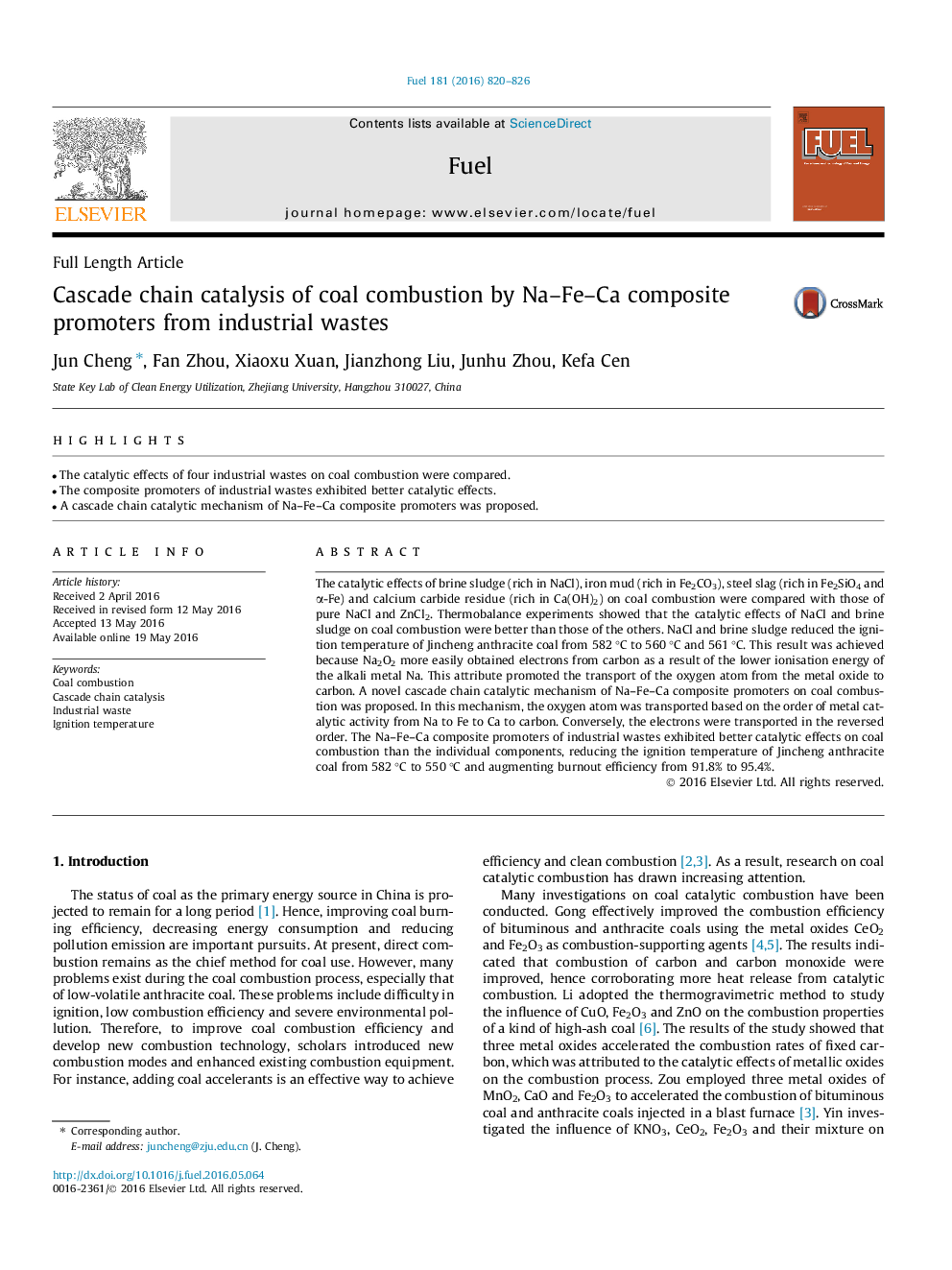| Article ID | Journal | Published Year | Pages | File Type |
|---|---|---|---|---|
| 204968 | Fuel | 2016 | 7 Pages |
•The catalytic effects of four industrial wastes on coal combustion were compared.•The composite promoters of industrial wastes exhibited better catalytic effects.•A cascade chain catalytic mechanism of Na–Fe–Ca composite promoters was proposed.
The catalytic effects of brine sludge (rich in NaCl), iron mud (rich in Fe2CO3), steel slag (rich in Fe2SiO4 and α-Fe) and calcium carbide residue (rich in Ca(OH)2) on coal combustion were compared with those of pure NaCl and ZnCl2. Thermobalance experiments showed that the catalytic effects of NaCl and brine sludge on coal combustion were better than those of the others. NaCl and brine sludge reduced the ignition temperature of Jincheng anthracite coal from 582 °C to 560 °C and 561 °C. This result was achieved because Na2O2 more easily obtained electrons from carbon as a result of the lower ionisation energy of the alkali metal Na. This attribute promoted the transport of the oxygen atom from the metal oxide to carbon. A novel cascade chain catalytic mechanism of Na–Fe–Ca composite promoters on coal combustion was proposed. In this mechanism, the oxygen atom was transported based on the order of metal catalytic activity from Na to Fe to Ca to carbon. Conversely, the electrons were transported in the reversed order. The Na–Fe–Ca composite promoters of industrial wastes exhibited better catalytic effects on coal combustion than the individual components, reducing the ignition temperature of Jincheng anthracite coal from 582 °C to 550 °C and augmenting burnout efficiency from 91.8% to 95.4%.
